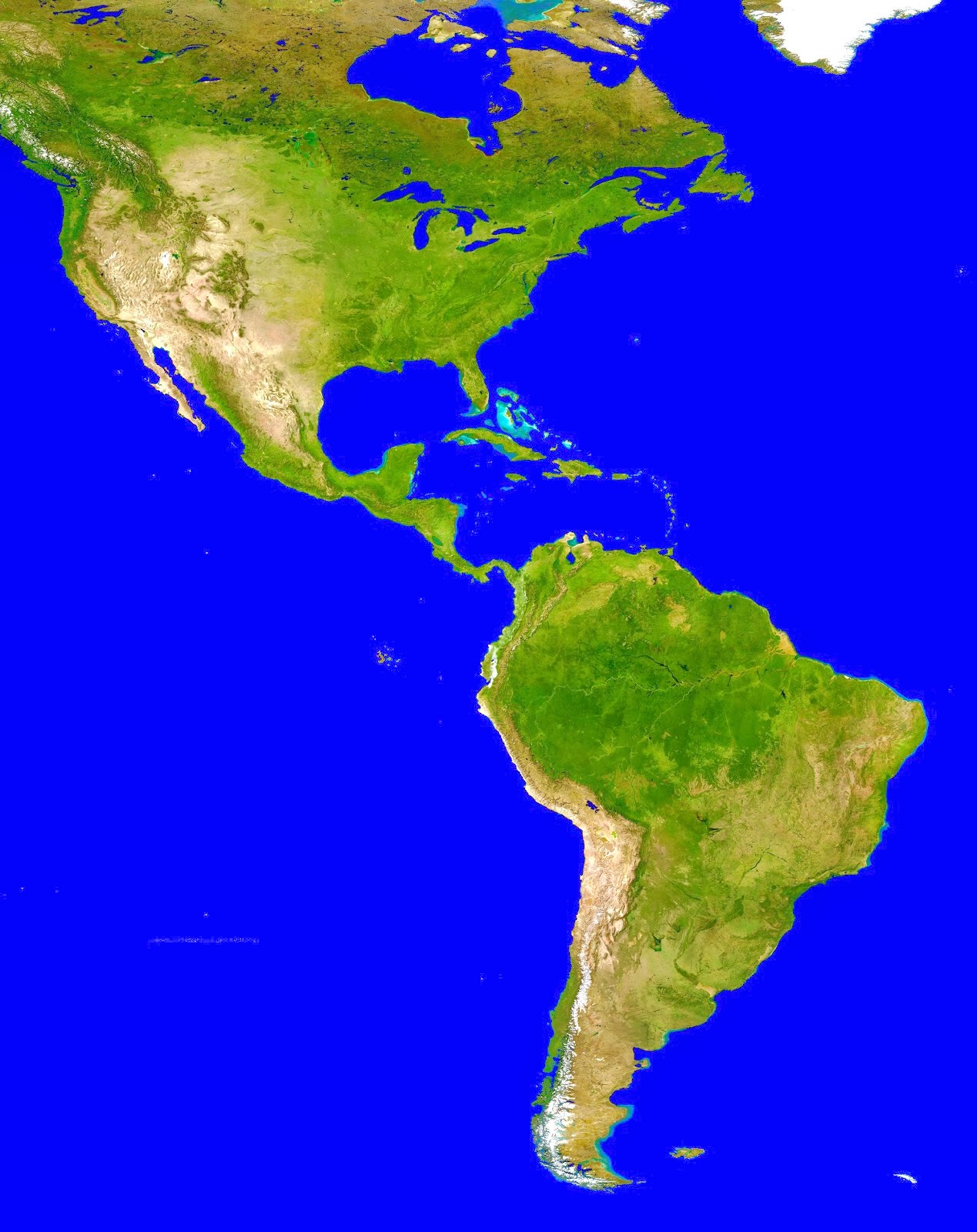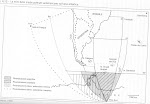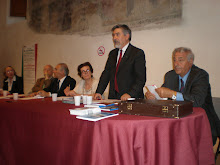mercoledì 20 marzo 2013
National Science Foundation Celebrates Inauguration of Atacama Large Millimeter/submillimeter Array (ALMA) in Chile
The U.S. National Science
Foundation (NSF), in collaboration with its Canada and Taiwan partners, Japan,
Europe and Chile, inaugurated the Atacama Large Millimeter/submillimeter Array
(ALMA) today, one of the world's most powerful telescopes, as part of an
international ceremony in Chile.
Chilean President Sebastián
Piñera, members of the Chilean cabinet, U.S. NSF Director Subra Suresh, European
Southern Observatory Director General Tim de Zeeuw, Senior Vice Minister in
Japan's Ministry of Education, Culture, Sports, Science and Technology Teru
Fukui, and senior officials and scientists of partner countries participated in
the inauguration.
ALMA comprises 66 antennas
that will provide high resolution images of the earliest galaxies in the
distant universe, as well as the formation processes of planets circling stars
in our own Milky Way galaxy. Scientists from around the world will have the opportunity
to explore such objects as they never could before, with an array of telescopes
more than 100 times more capable than any previous millimeter arrays.
"NSF is excited to play a
major role in ALMA and to foster new opportunities for international collaboration
and discoveries at the cutting edge of astronomy," said Suresh. "ALMA
promises to enable transformational research into the origins and evolution of
the universe."
NSF supported the construction
of ALMA with $499 million over 11 years and funded 25 of the 66 antennas. The
agency's annual contributions to the operations of ALMA total $34 million.
"We are proud of the U.S
contribution to ALMA and the international partnership that has made ALMA
possible," said U.S. Ambassador to Chile Alejandro D. Wolff.
"U.S.-Chile collaboration in astronomy dates back to 1849. The data and
science gathered from ALMA will build on other U.S. investments in Chile,
including the Cerro Tololo Inter-American Observatory, Las Campanas Observatory
and Gemini Observatory."
ALMA is located at an altitude
of 16,500 feet in the desert of Atacama, Chile. It sits above 40 percent of the
Earth's atmosphere and virtually all of the world's water vapor. ALMA is
designed to peer into a slice of the electromagnetic spectrum at millimeter
wavelengths--light that is closer to a radio wave than to the optical light
that is seen by the human eye.
Together with NASA's future
James Webb Space Telescope, ALMA will reveal extraordinary details of the
origins of structures in our universe, extending from planets around nearby
stars to the earliest galaxies as they formed more than 12 billion years ago.
The National Radio Astronomy
Observatory (NRAO), an NSF facility, has led the North American technical and
scientific contributions to ALMA. Managed by Associated Universities, Inc.
since its inception more than 50 years ago, NRAO has remained at the frontier
of radio astronomy research through the conception, development and operation
of transformational facilities such as ALMA.
(NSF- press release march, 13,2013)
venerdì 15 marzo 2013
South Georgia implements additional measures to safeguard Marine Protected Area
The United
Kingdom Minister for the Overseas Territories Mark Simmonds welcomed the
announcement of a set of additional measures to safeguard the sustainable-use
Marine Protected Area (MPA) around the South Georgia and South Sandwich
Islands.
This is an important part of
the long term environmental strategy to protect the unique ecosystem of the
South Georgia and South Sandwich Islands.
The new measures, announced by
the Government of South Georgia and South Sandwich Islands, include seasonal
closures, a ban on all bottom fishing deeper than 2.250 meters, and additional
closed areas within the existing MPA, which already covers over 1,000,000 km².
They will be monitored through
a series of scientific programs and enforced by a dedicated patrol vessel
designed to ensure sustainable management of fishing activity. The new measures
will further protect biodiversity in the Southern Ocean and will reinforce
South Georgia’s position as one of the highest scoring Marine Stewardship
Council certified fisheries in the world.
Speaking after the
announcement, Mark Simmonds said that he welcomed the Government of South
Georgia and South Sandwich Islands’ announcement to create additional measures
to look after their Marine Protected Area.
“Their high standard of
environmental stewardship and marine protection is crucial in protecting the unique
and internationally important biodiversity in the Southern Ocean. I am
delighted that the Government of the Territory continues to be among the world
leaders in delivering marine and environmental protection.”
The additional measures will
add extra protection to the SGSSI MPA, which was created in February 2012 and
covers over one million km2 of the highly productive waters around
the islands.
The new measures establish:
• A seasonal closure of the
fishery for Antarctic krill (from November 1st until March 31st) to avoid
competition with krill eating predators (particularly penguins & fur seals)
during the breeding season;
• Twelve nautical mile pelagic no-take zones around each of the South Sandwich Islands, protecting 18,042 km2, including important feeding areas of chinstrap and Adelie penguins;
• A ban on all bottom fishing deeper than 2.250 m, which covers 920,000 km2 (an area similar to the size of Spain), to protect deep-water habitats;
• Additional closed areas to protect sensitive benthic fauna and provide refugia for the highly valuable Patagonian toothfish, covering 12.662 km2 (approximately the size of Northern Ireland).
• Twelve nautical mile pelagic no-take zones around each of the South Sandwich Islands, protecting 18,042 km2, including important feeding areas of chinstrap and Adelie penguins;
• A ban on all bottom fishing deeper than 2.250 m, which covers 920,000 km2 (an area similar to the size of Spain), to protect deep-water habitats;
• Additional closed areas to protect sensitive benthic fauna and provide refugia for the highly valuable Patagonian toothfish, covering 12.662 km2 (approximately the size of Northern Ireland).
Fishing shallower than 700
metres was already prohibited, meaning that only 83.500 km2 (8%) of the sea-floor is available for bottom fishing. Bottom
trawling was already banned throughout the MPA.
Nigel Haywood,
Commissioner for South Georgia and the South Sandwich Islands, stated that “the
waters around South Georgia and the South Sandwich Islands are among the most productive
in the Southern Ocean, with very high biodiversity. We remain committed to the
highest standards of environmental management in this unique and globally
important UK Overseas Territory.
Following the
establishment of the MPA in February 2012, we have sought expert scientific
advice and consulted widely to ensure that the waters around South Georgia and
the South Sandwich Islands are one of the best managed maritime areas in the
world.”(Mercopress ,jan23,2013)
Shell Announce Pause in Alaska Drilling Program
Thursday, February 28, 2013,
2:20 AM
Royal Dutch Shell plc will pause its exploration
drilling activity for 2013 in Alaska’s Beaufort and Chukchi Seas.
Shell inform that the time out this season will be used to prepare
equipment and plans for a resumption of activity at a later stage.
“We’ve made progress in Alaska, but this is a long-term program that we are
pursuing in a safe and measured way,” said Shell Oil Company President, Marvin Odum.
“Our decision to pause in 2013 will give us time to ensure the readiness of all
our equipment and people following the drilling season in 2012.”
Alaska holds important energy resources. At the same time, securing access to those resources requires special expertise, technology and an in depth understanding of the environmental and societal sensitivities unique to the region.
Shell is one of the leaders in an industry move into offshore Arctic exploration. The company continues to use its extensive experience in Arctic and sub-Arctic environments to prepare for safe activities in Alaska.
Alaska remains an area with high potential for Shell over the long term, and the company is committed to drill there again in the future. If exploration proves successful, resources there would take years to develop.
Shell completed top-hole drilling on two wells in 2012 in the Beaufort and Chukchi Seas, marking the industry’s return to offshore drilling in the Alaskan Arctic after more than a decade. This drilling was completed safely, with no serious injuries or environmental impact.
After the drilling season ended, however, one of Shell’s drilling rigs, the Kulluk, was damaged in a maritime incident related to strong weather conditions. The Kulluk and the second drilling rig, the Noble Discoverer, will be towed to locations in Asia for maintenance and repairs.
(Maritime reporter, feb.27,2013)
Alaska holds important energy resources. At the same time, securing access to those resources requires special expertise, technology and an in depth understanding of the environmental and societal sensitivities unique to the region.
Shell is one of the leaders in an industry move into offshore Arctic exploration. The company continues to use its extensive experience in Arctic and sub-Arctic environments to prepare for safe activities in Alaska.
Alaska remains an area with high potential for Shell over the long term, and the company is committed to drill there again in the future. If exploration proves successful, resources there would take years to develop.
Shell completed top-hole drilling on two wells in 2012 in the Beaufort and Chukchi Seas, marking the industry’s return to offshore drilling in the Alaskan Arctic after more than a decade. This drilling was completed safely, with no serious injuries or environmental impact.
After the drilling season ended, however, one of Shell’s drilling rigs, the Kulluk, was damaged in a maritime incident related to strong weather conditions. The Kulluk and the second drilling rig, the Noble Discoverer, will be towed to locations in Asia for maintenance and repairs.
(Maritime reporter, feb.27,2013)
Clear message to Argentina: 99,8% of Falkland Islanders want to stay British
Despite frequent snow showers
and zero temperatures, the celebratory party had already started on Arch Green
in the centre of Port Stanley as the result of the Falklands’ referendum was a
foregone conclusion, but the loud cheer that went up from the assembled
gathering could be heard all over the town as the news filtered through that
only 3 persons had voted against the Falklands remaining a self-governing
dependent territory of Great Britain.
1,513 of the 1,518 persons, who cast their vote, put
an X alongside the YES box. This gave an overwhelming 99.8% victory to those
who wish the Islands to remain British.
Perhaps more importantly was the 92% turn-out of
voters which emphasizes the strong desire of the Falkland Islands population to
exercise their right to self-determination and to make their voice heard.
A vast array of British and Foreign media had gathered
in the Islands to report on the referendum and the news of the resounding 'YES'
vote was soon reverberating all around the world.
'The message is loud and clear', said Member of the
Legislative Assembly Gavin Short, 'that we want to stay British and Argentina
cannot ignore the wishes of the people'.
He added: 'The United Nations cannot ignore the
outcome either as we have ensured that the vote was conducted in a fair and
democratic manner and supervised by an International team of observers from
North, Central and South America'.
Mr. Brad Smith, the Head of the International
Observation Mission, in a statement, released immediately after the result was
announced, said: 'It is our finding that the Falkland Islands referendum
process was free and fair, reflecting the democratic will of the voters of the
Falkland Islands'.
While the Argentine Government has repeatedly declared
that they would not recognize the result of the referendum, there is no doubt
the message from the Falklands cannot be mistaken and the 99.8% vote in favour
of the population wishing to remain British will be frequently brought to their
attention whenever future calls are made for Britain to engage in negotiations
over the sovereignty of the Islands.
Several Argentine Nationals who live on the Islands
had indicated that they too would vote 'YES' for the Islands to remain British,
pinpointing the unstable Argentine Government as one of their reasons and
because they enjoy a high standard of living and fantastic education
opportunities for their children as another reason.
(Mercopress, march 12,2013)
Iscriviti a:
Post (Atom)










